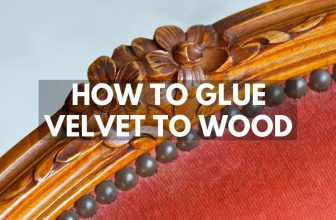
How to Glue Rubber to Steel
The information listed in this guide will show you how to glue rubber to steel using quick and easy methods. A common way to adhere steel and rubber is by using a Pliobond adhesive from popular brands like Grainger. You can use glues to create a temporary, semi-permanent, and permanent bond between rubber and steel surfaces.
Steel and rubber are common project materials used for building a wide range of things, from bridges and cars to minor DIY around the house. Metal and rubber make a challenging combination, and not all glues are up to the task. When choosing which glue to use, it is essential to keep in mind the end goal for the project, including how long you need it to last and the type of weather it might encounter.
According to research published by the American Chemical Society, “high elasticity and resistance to oxygen, ozone, ultraviolet light, and heat” make rubber an excellent cover for items made of steel. Unfortunately, certain substances have a more difficult time creating a solid bond. Gluing metals like steel and rubber require specific preparation and adhesives.
Which Glue Should You Use For Rubber to Steel?
A few things to consider when choosing adhesive include flexibility, drying time, and bond strength. You want something with enough flexibility and “give” to allow slight movement without breaking or weakening the bond. The dry time is essential to ensure you have enough time to apply it correctly and secure the surfaces together before the glue hardens.
Pliobond Adhesive
Pliobond is an adhesive designed specifically for porous and non-porous surfaces, making it ideal for metal and rubber. The glue is incredibly durable and can create a permanent bond on indoor or outdoor surfaces. Most Pliobond products have shock and mold-resistant properties.
Epoxy Resin
Epoxy resin for rubber and metal is a weather-resistant, easy-to-use adhesive that dries relatively quickly. However, epoxy resin is not ideal for long-term fixes because most epoxy resins have a weaker bond with rubber making it easier to peel off. For temporary changes, this is an excellent adhesive.
Contact Cement
Contact cement is quick-acting and can quickly and effectively bond all types of materials together, including metal and rubber. The quick-drying time makes it easier to apply without clamps. The adhesion is permanent, making it great for outdoor projects and securing parts to vehicles.
How to Prepare Rubber and Steel Before Gluing
Cleaning the surface thoroughly is the first step to creating a solid, long-lasting bond. Any dirt or debris lunging on the rubber or steel could weaken the entire adhesive and lead to chipping or other issues.
Quick Tip: Metal has no pores for the glue to deep into, making it more challenging to adhere to rubber. Some adhesives for metal require the surface to be slightly damp to ensure a good bond, while others do not. You will want to pay special attention to the instructions that come with your preferred brand of adhesive.
How to Apply Glue For Rubber to Steel
Apply the adhesive in an even coat directly to both surfaces, and then give it several minutes to get tacky before fixing the rubber and steel together. How long it takes for the pieces to be ready will depend on the dry time of the substance you choose to use. Always reference the instructions for any adhesive before use because some brands may have unique properties.
How to Cure Rubber and Steel Glue
The glue should be evenly applied and tacky on both surfaces before pressing them together. Clamps are not always necessary, especially for quick drying adhesives like contact cement. However, for a more secure bond, it can be helpful to use a series of clamps.
Which is the Best Glue for Rubber to Steel?
Pliobond adhesive is the best option for gluing steel and rubber together. The flexibility, strength, and dry time make it perfect for most around-the-house DIY and professional projects. You can find Pliobond adhesive in all the most popular brands at your local home improvement stores.
Remember to prepare your surfaces before applying the glue. Some require a damp surface, while others work better on clean, dry metal. Always read over the instructions that come with your product before use to achieve the strongest bond.










